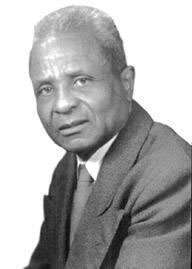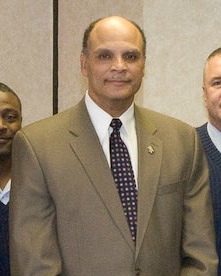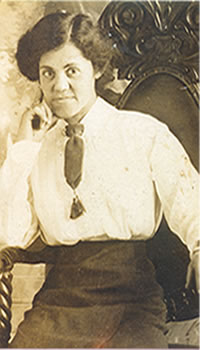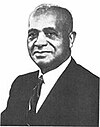
North Carolina Agricultural and Technical State University is a public, historically black, land-grant research university in Greensboro, North Carolina. It is a constituent institution of the University of North Carolina System. Founded by the North Carolina General Assembly on March 9, 1891, as the Agricultural and Mechanical College for the Colored Race, it was the second college established under the provisions of the Morrill Act of 1890, as well as the first for people of color in the State of North Carolina. Initially, the college offered instruction in agriculture, English, horticulture and mathematics. In 1967, the college was designated a Regional University by the North Carolina General Assembly and renamed North Carolina Agricultural and Technical State University.
James Carmichael Renick was an American academic, who served as Chancellor of University of Michigan–Dearborn and North Carolina Agricultural and Technical State University. Renick served also as the Provost and Vice President for Academic Affairs at Jackson State University in Jackson Mississippi. He resigned this position on October 5, 2015.
Jibreel Khazan is a civil rights activist who is best known as a member of the Greensboro Four, a group of African American college students who, on February 1, 1960, sat down at a segregated Woolworth's lunch counter in downtown Greensboro, North Carolina challenging the store's policy of denying service to non-white customers. The protests and the subsequent events were major milestones in the Civil Rights Movement.

The North Carolina A&T Aggies are the athletic teams that represent North Carolina Agricultural and Technical State University in Greensboro, North Carolina, United States. The Aggies compete in NCAA Division I and are members of the Coastal Athletic Association (CAA) in all sports with the exception of football and women's bowling. North Carolina A&T fields varsity teams in 13 sports, five for men and eight for women. The football team competes in Division I Football Championship Subdivision (FCS), formerly known as Division I-AA, in the CAA's technically separate football arm of CAA Football.

Franklin Eugene McCain was an American civil rights activist and member of the Greensboro Four. McCain, along with fellow North Carolina A&T State University students Ezell Blair Jr., Joseph McNeil and David Richmond, staged a sit-in protest at the Woolworth lunch counter in Greensboro, North Carolina, on February 1, 1960, after they were refused service due to the color of their skin. Their actions were credited with launching the Greensboro sit-ins, a massive protest across state lines involving mostly students who took a stand against discrimination in restaurants and stores by refusing to leave when service was denied to them. The sit-ins successfully brought about the reversal of Woolworth's policy of racial segregation in their southern stores, and increased national sentiment to the fight of African-Americans in the south.
The history of North Carolina Agricultural and Technical State University, the first land grant college for people of color in the state of North Carolina, can be traced back to 1890, when the United States Congress enacted the Second Morrill Act which mandated that states provide separate colleges for the colored race. The "Agricultural and Mechanical College for the Colored Race" was established On March 9, 1891 by an act of the General Assembly of North Carolina and began in Raleigh, North Carolina as an annex to Shaw University. The college made a permanent home in Greensboro with the help of monetary and land donation by local citizens. The college granted admission to both men and women from 1893 to 1901, when the board of trustees voted to restrict admission to males only. This policy would remain until 1928, when female students were once again allowed to be admitted.
North Carolina Agricultural and Technical State University offers 177 undergraduate, 30 master's, and 9 doctoral degrees through its nine professional colleges. The colleges and schools function as autonomous units within the university and adheres to the university's mission and philosophy. Bachelor's and master's degree programs are offered through the Colleges of Agriculture and Environmental Sciences; Arts, Humanities & Social Sciences; Business and Economics; Education; Engineering; Health & Human Sciences and the Science & Technology. Doctoral programs are offered through the Colleges of Agriculture and Environmental Sciences; Engineering; Science & Technology; The Joint School of Nanoscience and Nanoengineering; and The Graduate College.

Ferdinand Douglass Bluford was an American educator, and the third president of North Carolina Agricultural and Technical State University. Bluford headed the college for 30 years, serving longer than any president or chancellor in the school's history.

Warmoth Thomas Gibbs Sr. was an American educator, retired Second Lieutenant in the United States Army, civil rights activist, and fourth president of North Carolina Agricultural and Technical State University. Gibbs was one of the first black commissioned officers in World War I and served as president of then North Carolina Agricultural and Technical College from 1955 to 1960. During his presidency, North Carolina A&T became accredited by the Southern Association of Schools and Colleges.

Lewis Carnegie Dowdy was an American educator and the sixth president, and first chancellor of North Carolina Agricultural and Technical State University.
Cleon Franklin Thompson Jr. was an American educator best known for holding office as the seventh chancellor of North Carolina Agricultural and Technical State University and the eighth chancellor of Winston-Salem State University.

John Oliver Crosby was an American educator and the first President of what is now North Carolina Agricultural and Technical State University in Greensboro, North Carolina.
Stanley Fred Battle is an American educator, author, civic activist and former leader of Coppin State University and North Carolina Agricultural and Technical State University. Currently, Battle serves as the director of the Master of Social Work program and as a professor of social work at the University of Saint Joseph in West Hartford, Connecticut.

The Agricultural and Technical College of North Carolina Historic District is 10.1-acre (41,000 m2) historic district along the western boundary of the campus of North Carolina Agricultural and Technical State University in Greensboro, North Carolina. The area includes five historical Colonial Revival, Classical Revival style buildings. Some significant structures are among those located within the Historic District include the James B. Dudley Memorial Building and Harrison Auditorium. The district has been listed on the National Register of Historic Places since October 20, 1988.
Edward Bernard Fort is an American educator, who served as the 8th Chancellor of North Carolina Agricultural and Technical State University from 1981 to 1999. He is now Chancellor Emeritus and Professor of Leadership Studies.

Harold L. Martin Sr. is an American engineer, educator, former chancellor of Winston-Salem State and current chancellor of North Carolina Agricultural and Technical State University. He is the first alumnus in the history of North Carolina A&T to hold the position of Chancellor. Under his leadership, N.C. A&T has become the nation's largest historically black university (HBCU), its top-ranked public HBCU and North Carolina's third most productive public research university. It has also increased its standing as a land-grant institution and doctoral research university.

"Dear A&T" is the school song of North Carolina Agricultural and Technical State University. The words were written by Susan B. Dudley, wife of the second president, James Benson Dudley. Music for the poem was composed by Charles E. Stewart, director of instrumental and vocal music at the university from 1909 to 1917.

David Leinail Richmond was a civil rights activist for most of his life, but he was best known for being one of the Greensboro Four. Richmond was a student at North Carolina A&T during the time of the Greensboro protests, but never ended up graduating from A&T. He felt pressure from the residual celebrity of being one of the Greensboro Four; his life was threatened in Greensboro and he was forced to move to Franklin, NC. Eventually, he moved back to Greensboro to take care of his father. Richmond was awarded the Levi Coffin Award for leadership in human rights by the Greensboro Chamber of Commerce in 1980. Richmond seemed to be haunted by the fact that he could not do more to improve his world, and battled alcoholism and depression. He died in 1990 and was awarded a posthumous honorary doctorate degree from North Carolina A&T

The Willie A. & Carrol C. Deese Tower, simply referred to as Deese Tower, is a free standing campanile located on the campus of North Carolina Agricultural & Technical State University. The 88 feet (27 m) tall tower was a gift to the university from alumni Willie A. Deese and Carrol Chalmers Deese.



















